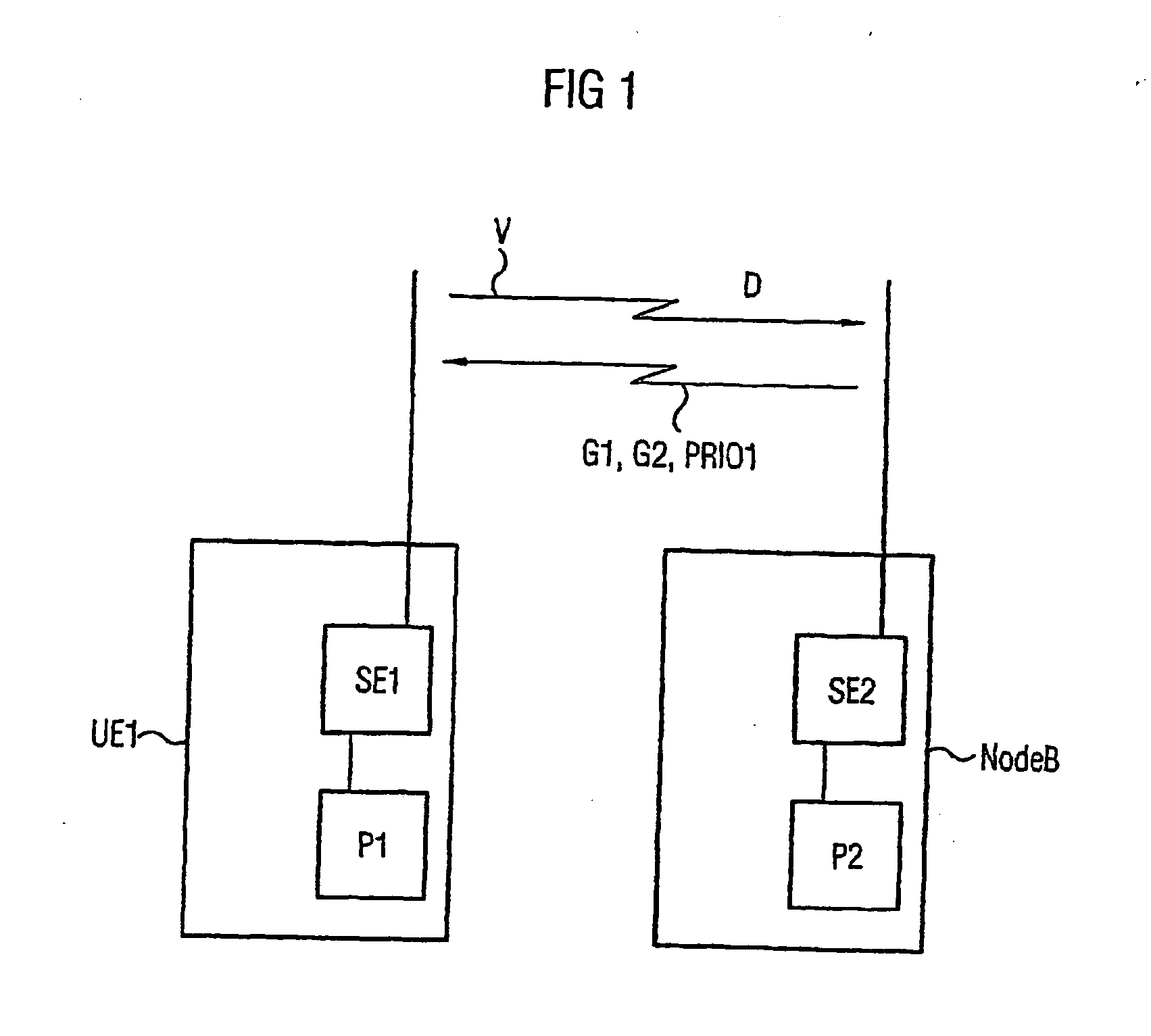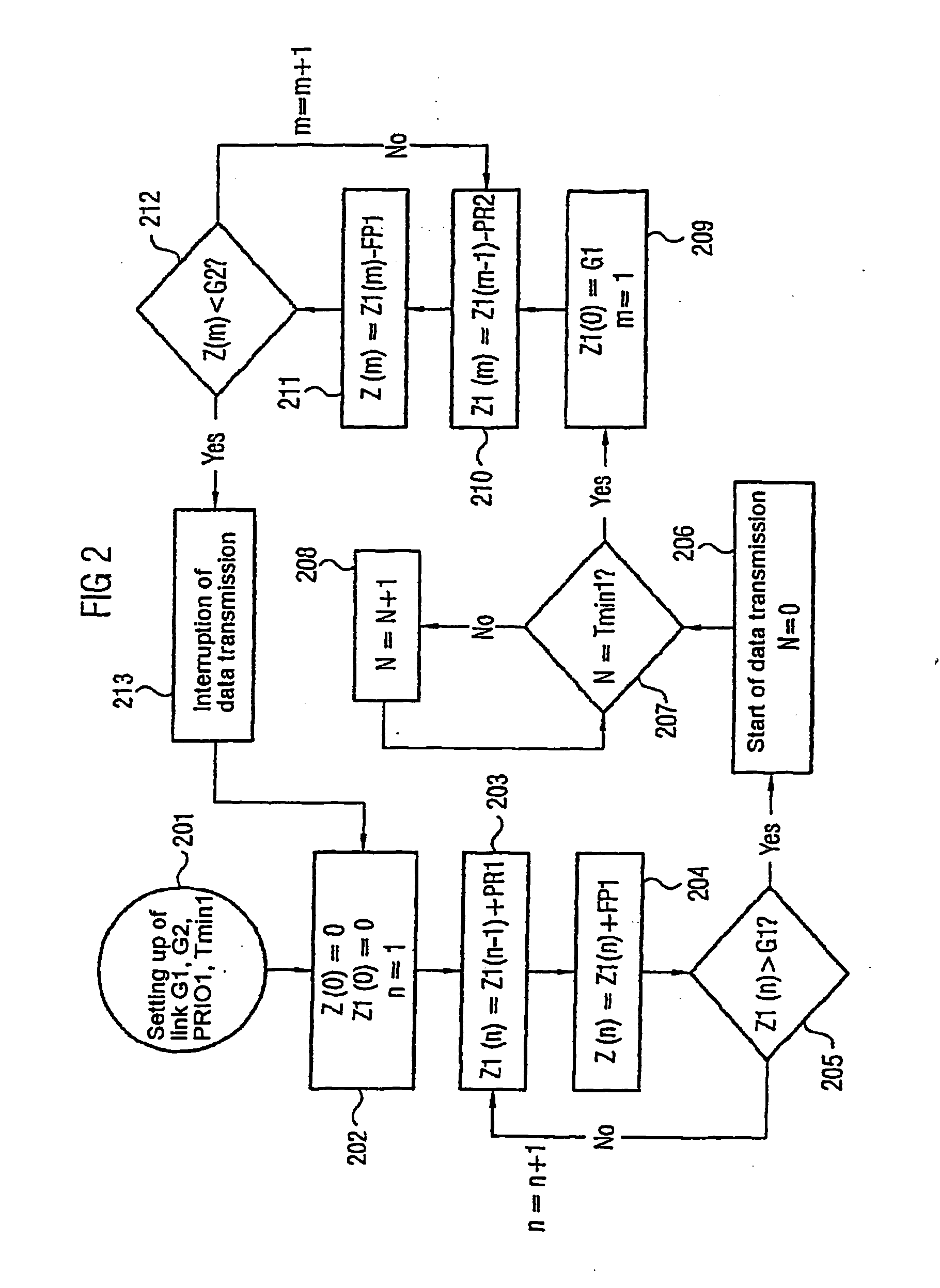Method for transmitting data from a transmitting station to a receiving station via a radio link, and corresponding receiving station and transmitting station
a technology of transmitting station and receiving station, which is applied in the direction of data switching networks, wireless communication, digital transmission, etc., can solve the problems of deterioration of transmitted services, long signal duration, and reduced cell coverage, so as to reduce the interference level at the receiving station
- Summary
- Abstract
- Description
- Claims
- Application Information
AI Technical Summary
Benefits of technology
Problems solved by technology
Method used
Image
Examples
Embodiment Construction
[0035] Reference will now be made in detail to the preferred embodiments of the present invention, examples of which are illustrated in the accompanying drawings, wherein like reference characters refer to like elements throughout.
[0036] A transmitting station is any station which can transmit signals. In the following exposition a subscriber station is regarded as the transmitting station. A subscriber station is, for example, a mobile telephone or a mobile device for transmitting image and / or sound data, for sending fax, Short Message Service SMS and e-mail communications and for Internet access. It therefore comprises a general transmitting and / or receiving unit of a radio communication system, in particular a base station.
[0037] In the following exposition a base station is regarded as the receiving station, without being restricted thereto.
[0038] A receiving station may, of course, also be a mobile station or any other station having a receiving device for receiving signals ...
PUM
 Login to View More
Login to View More Abstract
Description
Claims
Application Information
 Login to View More
Login to View More - R&D
- Intellectual Property
- Life Sciences
- Materials
- Tech Scout
- Unparalleled Data Quality
- Higher Quality Content
- 60% Fewer Hallucinations
Browse by: Latest US Patents, China's latest patents, Technical Efficacy Thesaurus, Application Domain, Technology Topic, Popular Technical Reports.
© 2025 PatSnap. All rights reserved.Legal|Privacy policy|Modern Slavery Act Transparency Statement|Sitemap|About US| Contact US: help@patsnap.com



